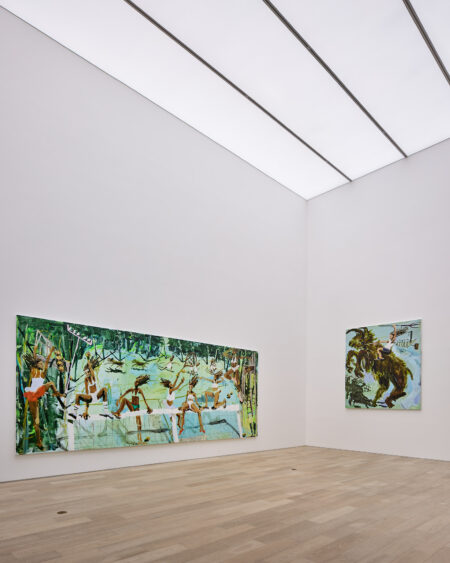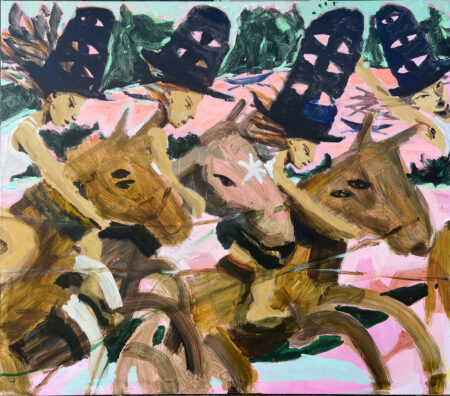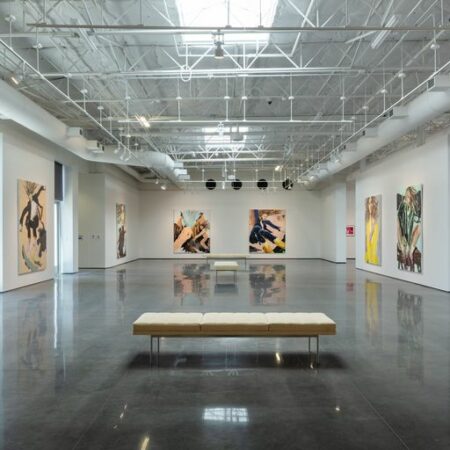OLIVER OREST TSCHIRKY
Works as an independent curator and art critic.
Oliver has held positions as Curator at the Kunsthaus Langenthal, Vice Director at Art Basel and Art Basel Miami Beach, Gallery Director at Artvera’s, Geneva, and Director of the Art Academy of St. Gallen and assistant Curator at the Museum of Fine Art Bern. Oliver Orest Tschirky specializes in modern and contemporary art, he holds a Master degree in International Relations from the Universities of St. Gallen, Switzerland, as well as a Master of Art History, Philosophy and Film Studies from the Universities of Lausanne and Bern, in Switzerland.
THE VISUAL RE-INTERPRETATION OF LOST PARADISE
BY MIE OLISE
They, looking back, all the eastern side beheld Of Paradise, so late their happy seat, Waved over by that flaming brand; the gate With dreadful faces thronged, and fiery arms: Some natural tears they dropt, but wiped them soon; The world was all before them, where to choose Their place of rest, and Providence their guide:
They, hand in hand, with wandering steps and slow, Through Eden took their solitary way.
John Milton, Paradise Lost, end of book XII, 1667
WHAT DOES A FLYING CARPET, CREATED BY MIE OLISE, HAVE TO DO WITH THE LOST PARADISE OF EVE AND ADAM?
The exquisite solo exhibition by Mie Olise at the SNYK Skive Ny Mu- seum is made up of six enormous paintings, a film projection, and an impressive sculptural structure. The paintings are figurative, painted with white and black, a lot of pastel colors and wild gestures. Some paint was dripping down the canvas during the process of paint- ing. With a slight view from below, the paintings show six different amusement park attractions called BUTTERFLY, SPIDER, BABY FLYER, WATERGAME, JET STAR 2 and FLYING CARPET. The contemplator of the canvases is looking up to the attractions like a child in the amusement park who stands next to the machines and dreams about riding them. At first glance, the paintings seem joyous because of the colors and the movement in them, but then the spectator realizes that the attractions are unfilled; nobody is sitting in the flying cabins.
The video confirms these impressions; the whole fairground is empty and abandoned. The attractions are defunct and the vegetation has taken over much of the buildings. Like on a ghost ride the camera follows the tracks, rails, and constructions of the empty park. As a result, uneasy and romantic feelings come up at the same time. Now the construction in the exhibition becomes comprehensible. A kind of wooden and partially painted scaffold or horizontal ladder structure with tree layers is suspending from the ceiling and fills the complete room of the museum. Because of a hanger and a counter- weight in form of a bag filled with coffee beans that has exactly the same heaviness as the construction, the whole trestle is floating in the air. The framework looks like the technical supporting structure of a machine or the rear side of provisional and fake building in an amusement park. It may be interpreted as the leftover of an aban- doned leisure park, the relict of a broken dream, or the symbol of a lost paradise.
Mie Olise takes as subject for the exhibition the surreal atmosphere of an abandoned amusement park with defunctive fairground attractions in the middle of nowhere that is overgrown by nature. It looks like an industrial ruin in the forest, quite a romantic and melancholic place. The smart compositions of her paintings have a subtle yet suspenseful effect on the viewer. Looking at the images more closely, one discov- ers that they feature bright skies which are however grey; the colorful stripes in the sky of the BUTTERFLY-painting is not a rainbow but in fact the tent roof of the machine. All the fun devices become threaten- ing because the cabins are hovering above the observer. Some of the machines even seem to be huge and dangerous animals. The “Butter- flies” are more like carnivorous vampire bats with blinking eyes that are flying attacks. And the SPIDER with its long legs appears like a gi- ant tarantula searching for food. The attractions appear to be built as fragile and weak structures and it seems only a question of time until they break and fall on the observer. Harsh contrasts between light and shadow reinforce the effect of these observations.
By regarding her new works, Mie Olise states: “It’s quite a strange experience to wander along the empty path of the abandoned amuse- ment park, once filled with happy people and now a contrast to the fun once going on. This makes me remember my own childhood and provokes melancholic feelings”. She uses the abandoned amuse- ment park and its attractions as an artistic metaphor for the lost par- adise. By painting, filming and constructing, she literally re-installed the amusement park and brought it back to life. In other words, she visually re-interpreted the complex story of vanished dreams and glo- rious hope. The smell of the coffee beans has the same effect as the fresh pastries in the episode of the madeleines by the French writer Marcel Proust; the aroma of the small scalloped-shaped tea cake can recall memories of the happy childhood. Together with the visual impressions and provoked allusions we remember the fortunate mo- ments and wish to be back in the irrevocable lightness and lost easi- ness of our youth. Because of our dreams and wishes as well as our imagination, Mie Olise as an artist has the ability to make a carpet fly: she evokes the belief that a wonderful dream about paradise on earth can come true.
The artworks by Mie Olise consist of the great themes of human existence, like paradise as a lost utopia, longing for utopia as a ro- mantic myth, the myth of the happy childhood as a lost paradise, fear and wishful thinking, lost and broken dreams, life as a joy and a tragedy, and the endless search for a new and better world. Thereby the artist works like a court jester; she is able to tell the serious truth with lightness and fun. In this sense, her paintings have a mirroring function for the society because they show our strengths and weak- nesses. Her work is sentimental, melancholic, poetic and a little bit sarcastic. She makes visible our ambivalent feelings, psychological dilemmas and inevitable contradictions in our existence. The decay- ing structures and abandoned settlements are a narrative statement for lost memories and a symbol for the up and down in life. The end- less tracks of the rollercoaster are a repetitive structure and there- fore an image for endless repetition. With her unique evocative, im- agery and visual language, Mie Olise touches one’s heart and dreams but also achieves to get the attention of the profound observer.
The spectator may become aware that in the end there is only one conclusion: to follow the philosophical postulate of the 17th century that the existing world is the best of all possible worlds. Our world that we are living in is our paradise that we can create and dream about. – Yes, it is very simple.
By the way, John Milton, who wrote the world famous epic “Paradise Lost”, also failed several times with his dreams and ideas. First, he needed to sell the right of his famous poem that was published in 1667; later on, the sequel “Paradise Regained” was not successful at all.


